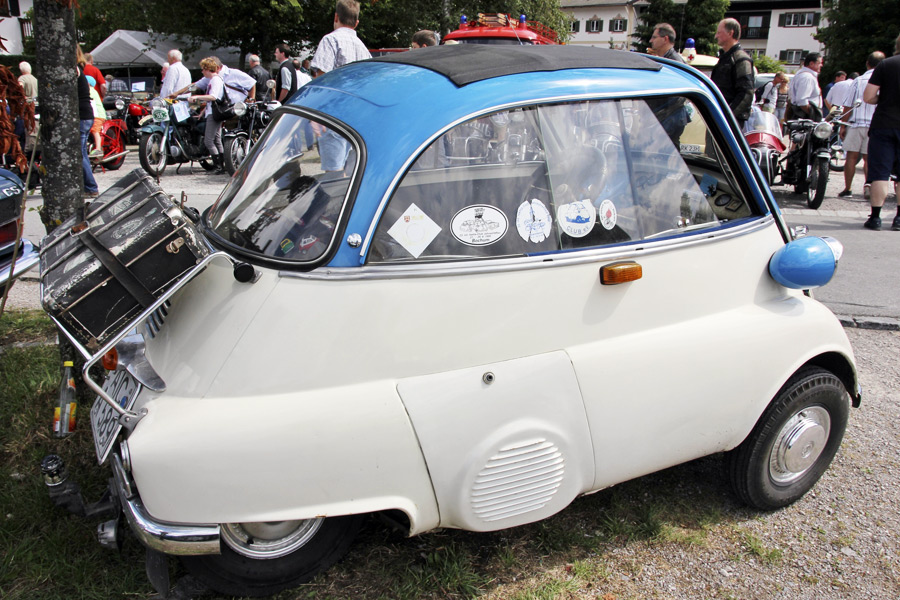Classic Cars: Strange Sights and Weird Cars Take Our Streets

I’ve always had a soft spot for weird cars. You know, the ones that were shunned by car enthusiasts because they were so extreme.
Perhaps the strangest vehicle I’ve ever owned was a BMW Isetta. This car was famous for the fact that it was built in the late ’50s and had a single entrance door in the front of the car. The steering wheel was actually attached to the door, and when you opened the door, the wheel moved aside with it so you could get in. It was an egg-shaped, rather small two-seater. This little thing was powered by a single cylinder BMW motorcycle engine and had a top speed of 50 mph. The car sold quite well in Europe, and there was actually a BMW Isetta dealer with garage frontage in Eastport.
Of course, in today’s safety-oriented car society, a car like this would never meet safety standards, but it would be a very interesting new product if it were modernized, just perfect for the times. It got 50 miles to the gallon, was as cute as a button and half the size of a Mini. It was also great fun to drive. Today, these cars have found a lot of respect on the collector car market and restored ones can be had for around $20,000 to $30,000.
I am absolutely enamored of the Citroen 2CV and the original VW air-cooled Beetle. These cars have a lot in common. They were considered radical cars for their time. They went on to become the biggest-selling cars ever built by their manufacturers. They both had air-cooled engines, the Citroen in the front and the VW in the rear. They were certainly “beauty impaired,” and you can argue about which one you would rather take to the prom. They were also the least expensive cars in the marketplace at their inception and just happened to be both magnificently creative and innovative examples of basic automotive design. The Citroen and Beetle had engines that seemed to run forever, and in the VWs case, build quality that was way beyond its price point. I’ve driven many VWs, (who hasn’t?) and several Citroen 2CVs, and they are fun, if slow, to drive.
The original German factory workers referred to the VW as the “Ugly Duckling” and Henry Ford turned down owning the VW plant in Germany. The entire French press scoffed and laughed at the impossibly strange looking 2CV when it was first shown at the Paris Auto Show. However, history has had the last laugh. Both these cars have a loyal following, especially in Europe, and early “poor man’s Porsches” and “Farmers cars” as these old Citroens and VWs are sometimes called, are in high demand as affordable collector cars.
With all of this small car talk, one can’t rule out the Morris Mini. It was certainly not an ugly duckling, but a sweet little car that surprised everyone with how roomy it was inside. Certainly not a strange sight in Europe, but because of its size, a strange sight on the roads here in America. It didn’t fit in on the same roads that were owned by vehicles the size of Ford F-150 pickups and 1959 Cadillac Eldorados that had tail fins bigger than a Mini. I owned an original Mini Cooper S in 1968 and drove it often around the streets of Manhattan.
It was daunting to be in traffic between delivery vans and Checker taxi cabs. I also have to admit, New York City pot holes played havoc with my 1968 Mini’s diminutive, 10-inch diameter tires. It was a tough time for a little Mini then, and thankfully the new Mini is almost twice as large, with 16- and 17-inch tires. New Minis are selling well here in America, and finally not a bizarre sight on the highway.
There are still a lot of weird looking sights on the road with rather strange monikers. Nissan Cubes, Honda Elements and the Kia Soul. Also, have you seen some of the outlandish outfits bicycle riders are wearing? The revenge of Lance Armstrong?



